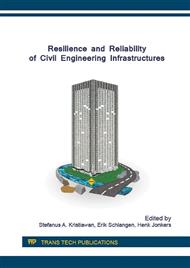p.359
p.364
p.369
p.379
p.385
p.394
p.404
p.408
p.416
Value of Travel Time for Public Transport Passenger in Urban and Intercity Trip
Abstract:
Travel time value of public transport passengers is one of important variables in decision making about transport policy. Giving subsidy for public transport and allocate it to the right passenger will result in more benefits for the passenger of public transport. And as an effect it will increase the number of passengers then increase the public transport usage. As a result, it will reduce the number of private car usage which will reduce the air pollution and oil consumption and finally support sustainability transport. In this study, Travel time value based on questionnaire data, which is designed with stated preference with route choice approach. The multiple linear regression model is used to analyzed factors that influence public transport values of travel time, and traveler's income and trip purpose are introduced as categories. The study results indicate, in general, travel time value of regional trips is higher than urban travel. In Urban trip, travel time values for school is higher than values for work and other travels, while, for intercity travel, time value for work are higher than school and other travels. It can be comprehended since in this study the passenger of the urban trip who the travel purpose is work has low income. In common, when the personal income increase the travel time value also increase. But within this study, the public transport passengers who have no income consist of students, and their school regulations give hard punishment when their students come late. Based on that, the passenger with no income their travel time value is higher than the passengers have the lowest income.
Info:
Periodical:
Pages:
408-415
Citation:
Online since:
July 2016
Authors:
Price:
Сopyright:
© 2016 Trans Tech Publications Ltd. All Rights Reserved
Share:
Citation:


